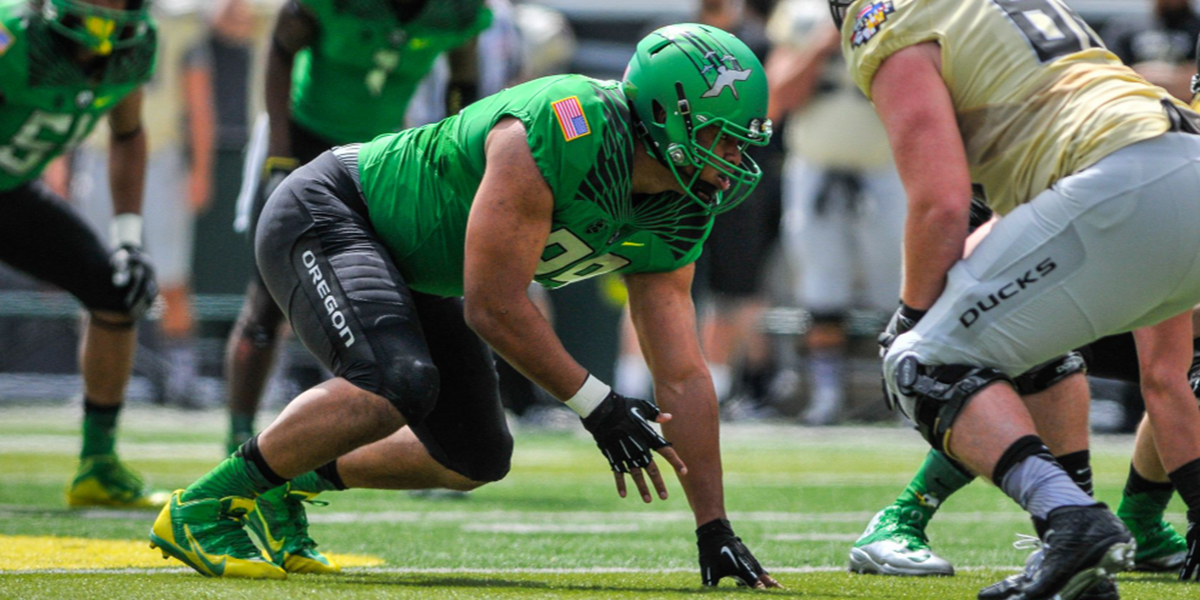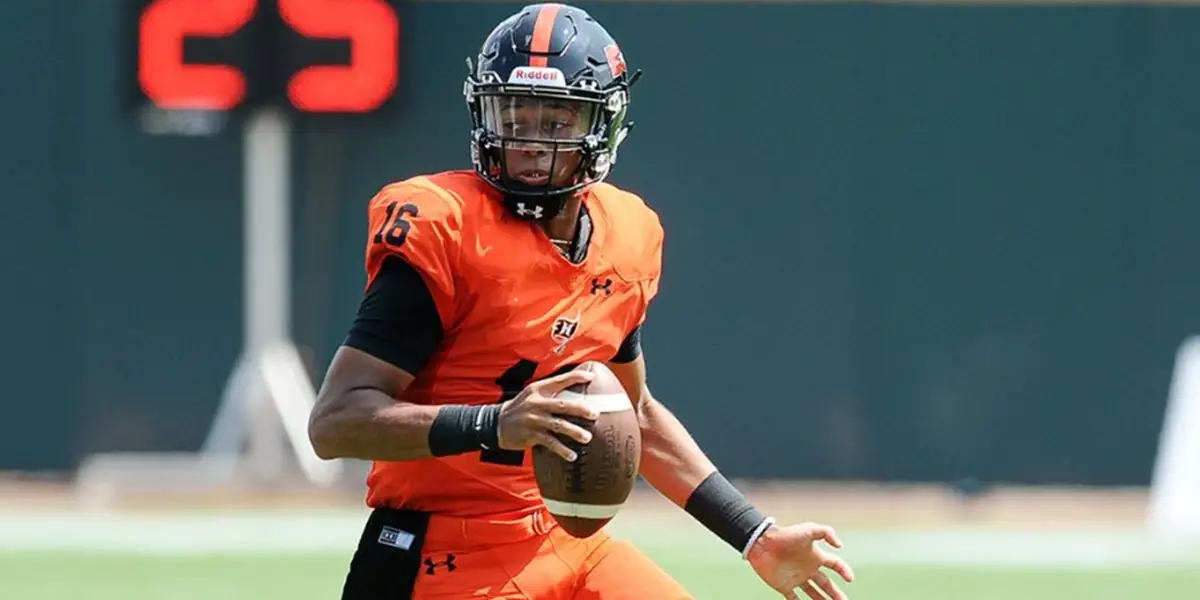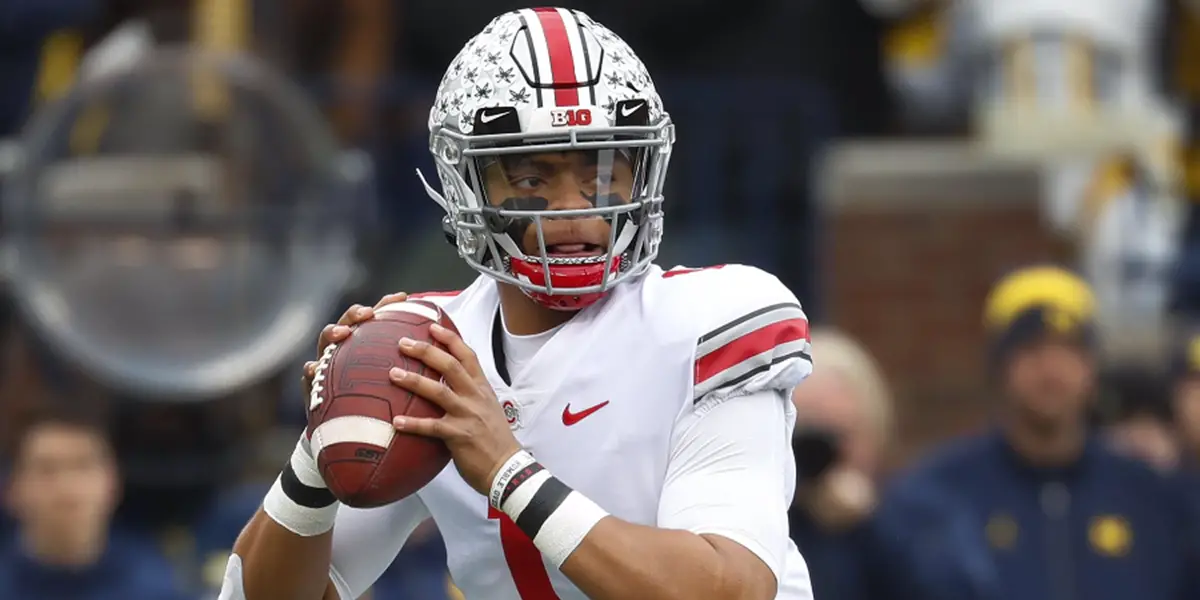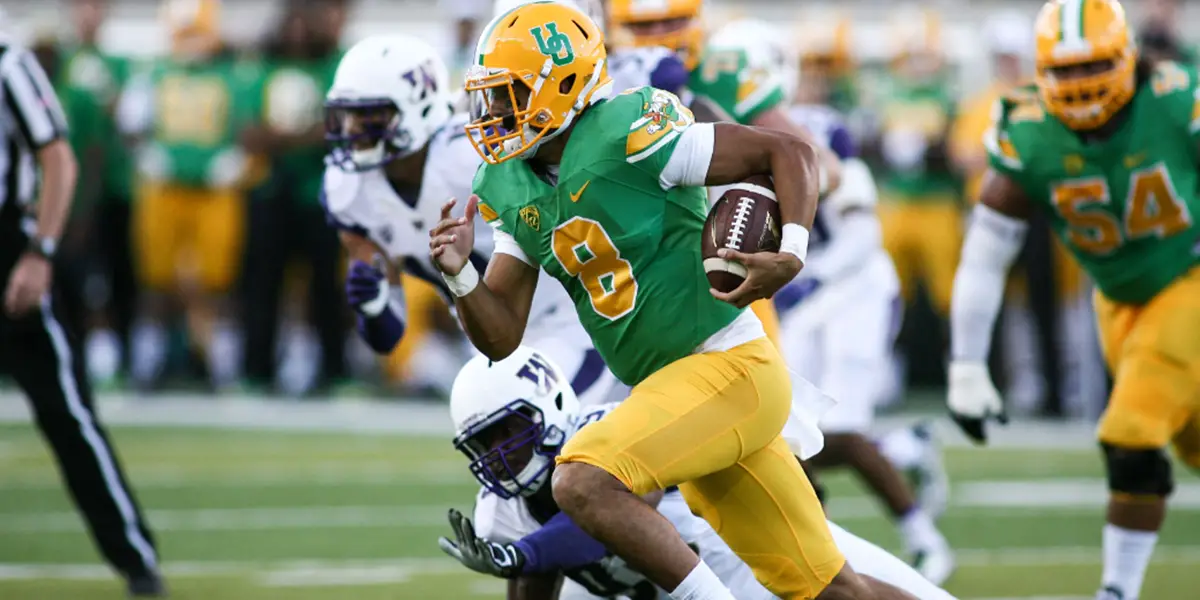College football coaches have to tread carefully when recruiting quarterbacks in today’s landscape. With blue-chip passers transferring at the very threat of competition, coaches do everything in their power to ensure that highly touted quarterbacks not only commit to their school, but also stay long enough to make an impact.
For this reason, coaches generally sign one quarterback at most per recruiting class. Top-flight quarterback recruits usually don’t want to compete with established veterans, let alone another incoming freshman.
But the Oregon Ducks broke convention by signing two quarterbacks in their 2020 recruiting class, even adding a third via the transfer portal. That strategy was borne largely out of necessity due to a lack of depth, but Mario Cristobal and company might have accidentally stumbled upon the best way to approach quarterback recruiting.
It’s smarter to sign multiple quarterbacks in a recruiting cycle than to bank on just one, even if he’s an elite prospect. With the position being so difficult to properly evaluate, it’s more likely that a team will land a prospect that materializes in college by recruiting the position in volume than by relying on its own scouting ability.
Less Isn’t More at QB
Recruiting is an inexact science. Modern recruiting services have done an admirable job of making prospect ratings more accurate than ever, but still, there’s a reasonably high chance that even a five-star prospect fails to make much of an impact at the collegiate level. It’s simply hard to properly rate and project thousands of high school football prospects, especially when there are so many factors to consider, such as competition level and surrounding talent.

Canton Kaumatule never lived up to his five-star rating at Oregon.
But as hard as it is to scout recruits in general, it’s particularly difficult to identify quarterbacks whose skills will translate to the collegiate level. There’s a level of randomness and volatility when it comes to quarterback recruiting that makes evaluating the position little more than a shot in the dark at times.
There have been plenty of highly touted prospects who have lived up to their five-star billings, such as Heisman winners Tim Tebow and Kyler Murray. But many others, such as John Brantley, Mitch Mustain and Max Browne, didn’t resemble blue-chip prospects in the slightest when they took the field in college.
Four of the past seven Heisman winners at quarterback were three-star recruits in high school, with a fifth, Joe Burrow, ranking as a low four-star. And half of the NFL starting quarterbacks as of 2019 ranked as a three-star prospect or lower as a high school recruit, including former NFL and reigning Super Bowl MVP Patrick Mahomes.
There are hidden gems and busts at every position, but the variance between quarterback recruiting rankings and their actual collegiate performance is significant. That’s why recruiting just one quarterback prospect per recruiting cycle is such a risky strategy. There’s a good chance that even a blue-chip quarterback will end up being a bust. So, why not mitigate that risk by signing a number of quarterback prospects and increasing the odds of finding one that materializes?

Robby Ashford was Oregon’s second quarterback signee of its 2020 recruiting class.
This might seem like a strange strategy, but college football teams actually do this with every position outside of quarterback. Coaches know that it’s highly unlikely that every member of their recruiting class will reach his potential, so they look to sign multiple blue-chip prospects at positions of need. The more top-flight prospects they sign, the higher the probability some of them materialize.
Considering that recruiting quarterbacks is even more of an unknown than recruiting other positions, and it’s by far the most important position on the field, it seems like a no-brainer to follow this same philosophy and bring in a bunch of quarterbacks each cycle in the hopes of one or a few actually panning out.
This isn’t to say that elite quarterback recruits shouldn’t be pursued, but they shouldn’t be pursued exclusively. Teams should play the percentages and invest multiple scholarships in the position each recruiting class. This, in conjunction with good scouting, gives a team the best shot at landing a game-changing quarterback.
Here’s How Recruiting Multiple QBs Can Work
There are a number of inherent risks that come with recruiting multiple quarterbacks in a cycle. But those risks pale in comparison to the heightened potential of landing elite collegiate quarterbacks.

Finding elite quarterbacks like Justin Fields should be every college football team’s top priority.
The first issue that could potentially arise as a result of bringing in multiple quarterbacks a year is an overcrowded quarterback room. As good as increased competition is, there’s probably a point where it’s actually more harmful than helpful to have a ton of quarterbacks on the roster.
But that wouldn’t be a regular issue considering the current transfer landscape. Realistically, if a team consistently recruited two to three quarterbacks in a recruiting class, one or two of those quarterbacks would likely transfer after a couple of seasons. The purpose of signing a bunch of quarterbacks is to see if any of them pan out, not to have them all be contributors for four years. The quarterbacks who don’t pan out would be better served competing early on and leaving when the writing is on the wall.
That leads to the next issue, which is scholarship allocation. By dedicating more scholarships to quarterbacks, the depth at other positions would have to suffer as a result. Furthermore, considering only one quarterback can start, some might see recruiting as many as three quarterbacks a year as a waste of resources.
The counterargument to both of these points is that the value of an elite quarterback is so overbearing that it will make up for the relative lack of depth due to scholarship attrition. Having to rely on a walk-on to fill out the depth chart at third-string defensive end isn’t ideal, but if the trade-off is a Heisman contender at quarterback, that’s a risk every team should be willing to take.

Oregon fans know the value of a Heisman-winning quarterback.
Finally, perhaps the biggest reason teams don’t regularly implement the strategy of recruiting multiple quarterbacks is they’re far less likely to attract blue-chip quarterbacks by doing so. There aren’t many elite quarterbacks who will sign with a program that already has a quarterback committed in its recruiting class.
This is a valid concern. But even if a team isn’t able to land five- or high four-star quarterbacks due to its recruiting strategy, it still has a great chance of finding an elite collegiate quarterback by recruiting a lot of good-not-great prospects. Over a four-year period, if a team recruits as many as 12 three- and low four-star recruits at quarterback, it’s likely that a handful of them turn out to be far better than their recruiting rankings.
But it’s also unlikely that such a strategy would completely scare away every top-flight quarterback prospect. Jay Butterfield, for example, signed with the Ducks as one of the top pro-style quarterbacks in the country. However, he did so with the understanding that Oregon was pursuing another quarterback as well. That second Oregon quarterback signee, Robby Ashford, was also a four-star prospect, dispelling the notion that teams can’t recruit multiple quarterbacks and land blue-chip prospects at the same time.
If teams changed the way they approached quarterback recruiting, they would have far less trouble consistently finding “their guy.” Simply bringing more bodies to the quarterback room increases a team’s chances of finding a good one.
It’s unclear whether Cristobal and the Ducks intend to implement this strategy in the recruiting classes to come, but don’t be surprised to see the staff take a closer look at the benefits of such a system if one of its quarterbacks from the 2020 recruiting class makes some noise.
Joshua Whitted
Morgantown, West VirginiaTop Photo From Twitter
Joshua is an adopted Duck fanatic, originally hailing from southwestern Pennsylvania. His love for the University of Oregon began as a young child when he became mesmerized by the flashy uniforms and explosive offenses of the Chip Kelly era, and now, he follows the team religiously. His fondest memory of the team is seeing De’Anthony Thomas race past Wisconsin defenders back in the 2012 Rose Bowl. A true football enthusiast, Joshua loves studying the intricacies of the game, and he aspires to become a professional sports journalist. Joshua now resides in Morgantown, West Virginia where he works in customer service. When he’s not watching Oregon replays, Joshua loves reading, writing, and spending time with his family. Contact: whittedjd@gmail.com


